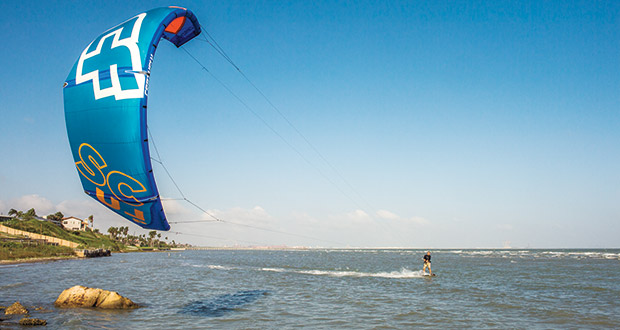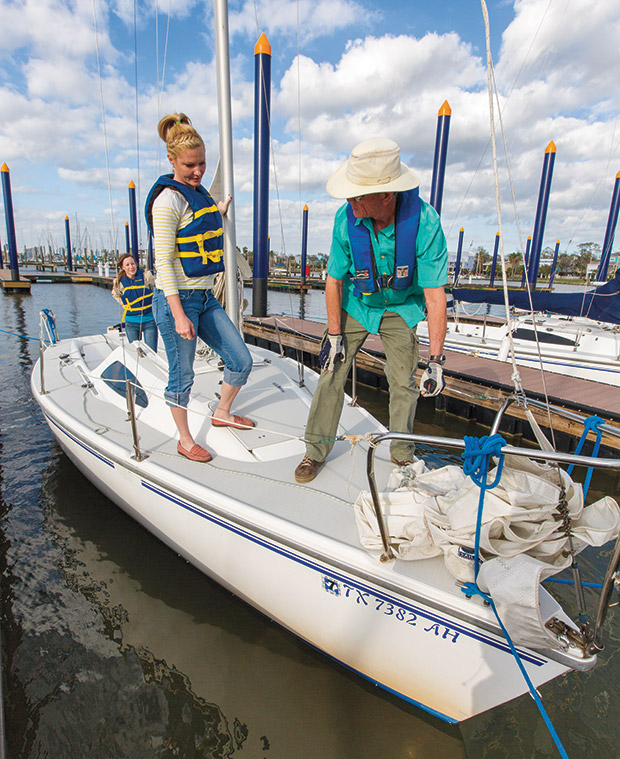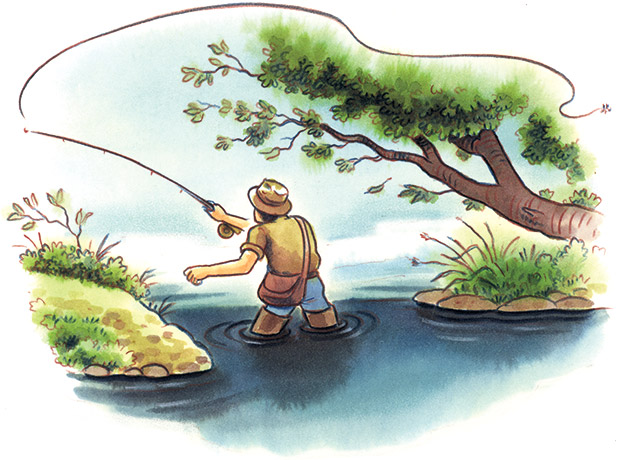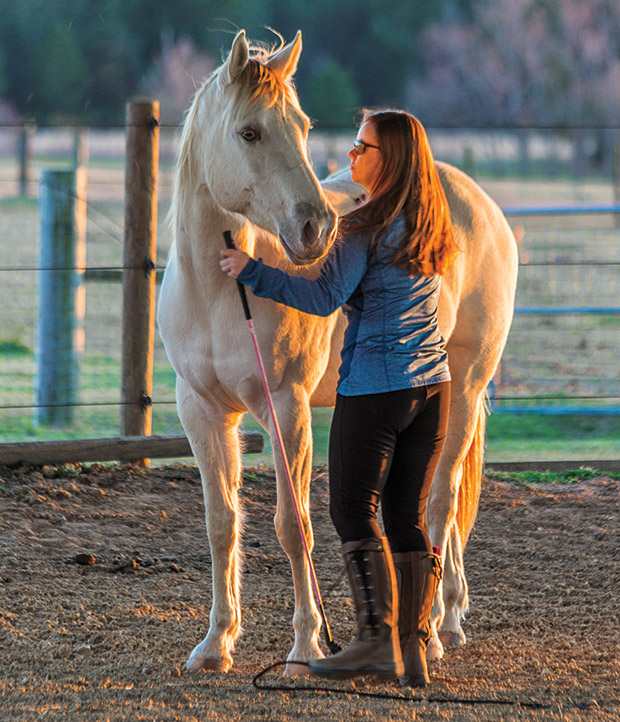
Kiteboarding lessons on Corpus Christi Bay. (Photo by Michael Amador)
That’s our kind of summer school, and we think you’ll give it an A+.
JUST ADD Water
Flyboarding
South Padre Island Water Sports, South Padre Island
Hover above the water on a water-jet board connected to a
personal watercraft during a flyboarding lesson. After a short orientation covering gear and technique, you spend 20 to 30 minutes of hands-on training, hovering up to six feet above the water. First-timers tend to find themselves pretty tired after 30 minutes of flyboarding, but if you still have get-up-and-go, add time in 10-minute increments. “Flyboarding is relatively easy and most people get the hang of it in 10 or 20 minutes,” owner Jeff Hoxtell promises.
Rather stay on the water’s surface? Instructors also teach surfing, kiteboarding, and stand-up paddle boarding lessons.
South Padre Island Water Sports opens seven days a week; book lessons a day in advance. Lessons range from $99 to $199 depending on the number of people in your group. An additional 10 minutes flying time costs $49. Surfing and stand-up paddle board lessons start at $59. Call 956/299-9463; www.spiws.com or www.flyboardsouthpadreisland.com.

Joe Laughlin with the Bay Area Sailing School teaches a class on Clear Lake. (Photo by Erich Schlegel)
Sailing

Joe Laughlin with the Bay Area Sailing School teaches a class on Clear Lake. (Photo by Erich Schlegel)
Bay Area Sailing School, Kemah
More than a dozen sleek sailboats bob in their berths at the sunny, breezy Watergate Yachting Center, and you can learn to sail one of them in a two-day course with American Sailing Association-certified instructors. After completing the basic keelboat course, rent sailboats up to 33 feet long from Sackett’s Sailing Center and cruise nearby Galveston Bay. The next level course teaches bareboat chartering, a skill that opens the door for sailors to go anywhere in the world.
The basic course at Bay Area Sailing School costs $293 and includes one mentor sail and one half-day charter upon completion of course. Call 281/334-4179; www.bayareasailing.com.
Sandcastle-Building
Sandcastle Guy, Port Aransas
Mark Landrum, aka the “Port Aransas Sandcastle Guy,” offers lessons on building classic sandcastle structures with towers, stairs, arches, and rocky cliffs. Call and make an appointment and he’ll come to your beachfront condo or favorite spot on Mustang Island or North Padre Island beaches (he needs at least a week’s notice in summer). Landrum provides everything needed to learn three ways to stack and carve sand into impressive shapes. Well, you do need to bring your own camera.
An hour-and-a-half lesson with the Port Aransas Sandcastle Guy for up to 10 people costs $70; $140 for two-and-a-half hours, up to 30 people. Call 361/290-0414; www.sandrum.com/index.html.
Stand-Up Paddle Board and Kayak Tours
Aquarena Center, San Marcos
Two hundred springs bubble up beneath Spring Lake, forming one of the largest aquifer-driven spring systems in the world. People first came to these waters some 12,000 years ago, making the San Marcos area one of the longest continually inhabited settlements in North America. These springs create the San Marcos River and house eight threatened and endangered species, including Texas Wild Rice, found nowhere else on earth. Texas State University’s Meadows Center for Water and the Environment, which manages Spring Lake, teamed up with REI Outdoor School to offer kayaking lessons, plus sunset stand-up paddle board and kayak tours, on the impressively clear and chilly water. REI provides the gear and instruction. Learn about the aquifer, the springs, and inhabitants of the lake as you glide along its surface. No experience required.
Aquarena Center’s Sunset Kayak Tour costs $45 ($40 for REI members). The Full Moon Kayak Tour costs $65 ($55 REI members). Kayak and stand-up paddle board classes cost $65 ($55 for REI members). Find more information at www.reispringlake.com and www.meadowscenter.txstate.edu/Education/Glass-BottomBoats.html.
BUILD YOUR SKILLS
Sewing
Urban Spools, Dallas
Can’t find a pillow to match your room? Want a one-of-a-kind outfit? Michelle Kitto (below) started Urban Spools so you can sew your own! She offers a basic sewing class—sewing machines provided—for ages 16 and up and one for ages 8 to 15. Other classes teach specific projects such as drawstring bags, zipper pouches, and quilts. Urban Spools stocks fabric and supplies and houses a kitchen so you can bring snacks or lunch.
“I really believe that everyone needs some sort of creative outlet,” Michelle says. “Sewing, specifically, empowers you.” She offers Sunday afternoon “open sew” sessions for people to come hang out and sew together. And yes, guys can sew and one even teaches here.
Urban Spools’ three-hour “Intro to Sewing” class costs $45, which includes the fabric to make a pillow cover. Call 214/324-5755; www.urbanspools.com/collections/classes.
Southwest School of Art, San Antonio
In a six-session glassblowing class for beginners, you’ll handle hot glass and create a finished piece such as a tumbler-sized drinking glass. One of the most ancient of art forms, glassblowing has many modern applications, ranging from decorative or functional objects to architectural accents. The school organizes contemporary art exhibitions and houses a small history museum and a lunch café.
The Southwest School of Art’s introduction to glass-blowing costs $455. Use of the studio, safety equipment, and clear glass materials are included. Classes are also offered on making stained glass, glass beads and marbles, and mosaics. The school also offers a wide array of art courses in ceramics, metalsmithing, printmaking, drawing, painting, and more. Call 210/224-1848; www.swschool.org.
Beer & Wine Making
Texas Brewing Inc., Fort Worth
Brenden “Stubby” Stubblefield (right) was bitten by the home-brewing bug after taking microbiology at Texas Tech University. In his classes, you’ll learn enough about the science of making beer to start turning water, malt, hops, and microbes (yeast) into an enjoyable beverage. For those who prefer the science of fermenting grapes, Texas Brewing offers a beginner’s wine-making class, too.
Texas Brewing’s Intro to Brewing or Winemaking costs $20. Class participants receive a 15-percent discount on any ingredient kit. Call 682/647-1267; www.txbrewing.com/classes-events.
Trapeze
Lone Star Trapeze Academy, Bryan
Fly through the air with the greatest of ease and learn this circus act invented by Jules Léotard in 1859. You need no experience or special level of fitness; owner Chad Davis says everyone six years of age and up can try it. Experienced instructors walk you through the whole process, and you’ll be wearing a safety harness.
A two-hour session at Lone Star Trapeze Academy costs $45 per person (maximum weight 250 pounds). Schedule online. Call 979/220-3744; www.lonestartrapezeacademy.com.
Need something a little less, um, airborne? Try the Power Pole at Travaasa Austin resort. Scale a telephone pole and leap from the top to a hanging trapeze—no worries if you miss, you’ll be safely lowered to the ground via your safety harness. Another option is the giant swing 35 feet in the air. Call 877/261-7792; www.travaasa.com/austin.
GO WILD
Bat-Viewing
Bats play important roles in nature: spreading seeds, pollinating plants, and eating insects. One species even eats scorpions and centipedes. What’s not to love?
Texas claims 34 bat species—more than any other state, naturally—including two of the three pollinating species in the United States, the Mexican long-tongued bat and Mexican long-nosed bats. Both migrate from Mexico, following the flowering of cactus species during spring.
Female Mexican free-tailed bats migrate here from Mexico in early spring. They form large maternity colonies, give birth in June, and remain in Texas through October. Several places offer the opportunity to watch one of these colonies emerge from its cave at dusk, an unforgettable sight. These tours include educational talks about why we need the flying mammals. “A world without bats is a world full of biting insects,” says Fran Hutchins of Austin-based Bat Conservation International.
Before attending a bat emergence, know that bats, like humans, may not come out in inclement weather (including cold, rainy, or windy conditions).
Bracken Cave, New Braunfels
Bracken Cave houses the largest bat colony and greatest concentration of mammals in the world, more than 15 million Mexican free-tailed bats. Bat Conservation International (BCI), which owns this cave and some 2,000 acres of surrounding Texas Hill Country, works to protect bats and bat habitat around the globe. Some of that land lies right under the path the bats take when leaving and returning to the cave and, since young bats learning to fly sometimes crash-land, this undeveloped land creates a safety net for the pups.
According to BCI, Bracken Cave’s residents eat 140 tons of bugs a night throughout the summer. When the mother bats leave to forage at night, they deposit the pups together in a “crèche,” clinging to the ceiling of the cave. The pups begin hanging closer to the entrance of the cave as they grow and eventually join their mothers hunting for insects all night. Sit on benches opposite the cave opening and watch an ever-growing cloud of bats flow from the cave like so much fluttering smoke.
Bat Conservation International offers tours of Bracken Cave to members during the summer, and public tours on select nights. Book in advance. Group camping and special events are available by previous arrangement. See www.batcon.org/our-work/regions/usa-canada/protect-mega-populations/bracken-cave, or call 512/327-9721.
Eckert James River Bat Cave Preserve, Mason
Southwest of the town of Mason, the Eckert James River Bat Cave Preserve houses about 4 million Mexican free-tailed bats. The preserve opens to tours from mid-May, when the pregnant females arrive from Mexico, until late September, when mothers and young head south. A small amphitheater faces the cave opening and bats skillfully fly within inches of the audience as they
take off into the dusk.
Interpretive tours of the Eckert James River Preserve are offered May through September, every Thursday through Sunday, 6 p.m. to 9 p.m. Some sunrise viewings of bats returning home also are offered. Entry fee: $5, free age 5 and younger. Call ahead (325/347-5970) for best viewing times and river status; www.nature.org/ourinitiatives/regions/northamerica/unitedstates/texas/placesweprotect/eckert-james-river-bat-cave-preserve.xml.
Devil’s Sinkhole, Rocksprings
Devil’s Sinkhole, a 1,860-acre state wild and natural area, houses a Mexican free-tailed bat colony in a vertical cavern more than 320 feet in diameter and more than 350 feet deep. A 140-foot shaft leads from the cave to an opening on the surface approximately 50 feet wide. More than 3 million bats stream out of this opening, forming a “bat tornado”—a constantly rotating swirl of flying mammals extending ever higher and wider until the bats break off into separate streams and head out across the Hill Country.
Bat emergence tours at Devil’s Sinkhole take place Wednesday through Sunday, May through October. Day tours of the sinkhole, nature hikes, and morning bat return tours are also offered. Tours begin at Rocksprings Visitor Center; reservations required. Preseason tours cost $6. During bat season, tours cost $12 adults, $10 seniors, and $6 age four to 11. Group rate for 10 or more is $8. Call 830/683-2287; www.tpwd.texas.gov/state-parks/devils-sinkhole.
Fly-fishing
Hill Country Flyfishers

(Illustraton by Ross MacDonald)
Hill Country Flyfishers’ two-hour casting lesson costs $100 for one person, $200 for two to three people, and $250 for four to 10 people (perfect for families). Call 512/589-3474; www.hillcountryflyfishers.com/workshops/casting.
Several state parks host Go Fish! learn-to-fish events; in three hours, learn to set up a fishing pole, how different lures and bait work, casting, safety, and how to identify different types of fish. Other parks schedule “fish with a ranger” programs to help folks get the hang of it. Anyone can fish in a state park any time without a fishing license (rules on number and size of fish and entry fees still apply). Check the calendar of events online at www.tpwd.texas.gov/calendar/state-park-events.

Instructor Tara Chatterson at Five Horses Ranch. (Phot by Will van Overbeek)
Five Horses Ranch, Waller
The road into Five Horses Ranch passes between a pond and a pasture where a friendly Clydesdale named Feather whinnies a greeting. Near the barn, owner and instructor Shannon Birkelbach brushes a sleek black Fresian named Eriond. Five Horses Ranch has more than a dozen different kinds of horses and teaches people how to ride on Western and English saddles. “I teach natural horsemanship,” says Birkelbach. “I can do a private lesson if you’ve never ridden and just want to try it. Even if you’ve never been on a horse, in about 10 lessons you’ll learn to walk, trot, and canter.” Many places around Texas offer trail rides and a number have lessons for folks with their own mount, but only a few provide lessons for those without a horse.
A one-hour private lesson at Five Horses Ranch costs $60; $50 per person for a one-and-a-half-hour group lesson. Book 48 hours in advance. Call 832/993-1895; www.fivehorses.com.
GET SMART AFTER DARK
Nature Nights
The University of Texas at Austin Lady Bird Johnson Wildflower Center, Austin
Dedicated to conserving, restoring, and creating healthy landscapes, this south Austin facility includes public gardens, woodlands, and meadows containing more than 650 native plants, along with exhibits, trails, and a family garden. Free Nature Nights feature interactive presentations, hikes with experts, story times, scavenger hunts, live animals, and more. This summer’s topics include growing plants, predators, pollinators, and “harnessing fire.”
The Wildflower Center’s Nature Nights take place this year on June 9, 16, 23, and 30. Call 512/232-0100; www.wildflower.org/nature.
Observatory Tours
Stargazing remains an unbeatable summer activity, but many observatories also offer day tours and a chance to learn more about telescopes and astronomy. Two Texas favorites follow.
McDonald Observatory, Fort Davis
Take a 90-minute guided tour for an up-close look at the observatory’s largest research telescopes and insight into the workings of this scientific research facility. The Frank N. Bash Visitors Center has a Decoding Starlight exhibit and a Solar Viewing Program at 11 a.m. and 2 p.m. daily, featuring telescope viewing of features such as sunspots, prominences, and flares (or viewing of recorded images if it’s cloudy).
McDonald Observatory’s Solar Viewing and tour costs $8 for adults, $7 for children; solar viewing only costs $5 for adults, $4 for children (online price). Kids 5 and younger are free. Advance reservations are strongly recommended, especially on holiday weekends and during summer months. Self-guided tours of only the Hobby-Eberly Telescope are offered free from 10 a.m. to 5 p.m. daily. Call 877/984-7827; www.mcdonaldobservatory.org/visitors/programs/tours.
Fun Fact: Nearly 250 recorded meteorites have fallen in Texas, including one that fell into a swimming pool in Brewster County in 1946.
George Observatory, Fort Bend
Part of the Houston Museum of Natural Science but located in Brazos Bend State Park, this observatory houses a meteorite exhibit with a piece of a carbonaceous chondrite meteorite that landed in the Mexican town of Allende, Chihuahua, in February 1969. The meteorite contains interstellar grains (or stardust) and may have formed during an explosion of a supernova before the birth of our solar system.
The sidewalk to the observatory features a representation of the solar system with the observatory building representing the sun and each planet scaled to its distance from there—except for the former planet Pluto, that is. An accurate scale would place it in the park’s Elm Lake, home to hundreds of alligators. Instead, Pluto’s marker lies at the end of the walk. By this scale, the star nearest us would be in Denver, Colorado. Visitors can stand on a sun-dial on the observatory roof with their feet on the current month and tell time by their shadows.
George Observatory exhibits open Saturdays from 3 to 11 p.m.; solar system model and sundial available any time. Call 281/242-3055; www.hmns.org/george-observatory.








